HOOFING
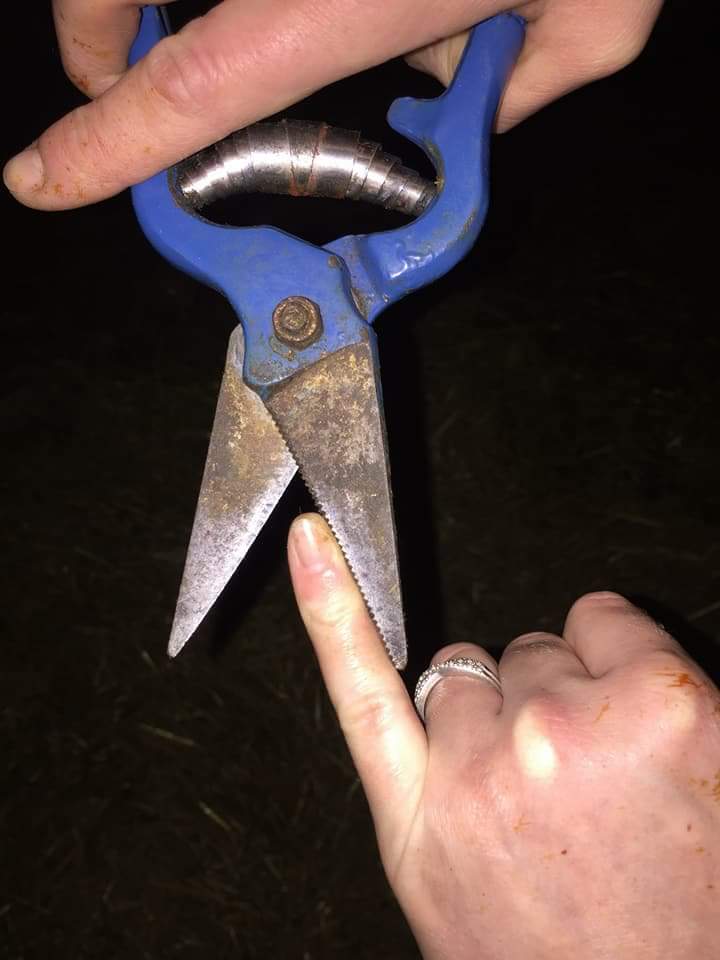
Hi guys :-) I hope everyone is warm and happy this evening?
Following on from a lady who posted about foot problems in Zwartables, I thought I'd show you the progress of one of my Father's tups & how I'm treating his feet.
This tup is a shearling from an early crop last year, well grown enough to go out on loan to a friend who has a couple of ewes & breeds for the table.
He's out of a herdwick x commercial ewe and by a texel tup so not a tup that is marketable, but a nicely put together sort of lad and should be a decent stock getter.
Anyway, he blew a couple of abcesses whilst out on loan - this wet isn't particularly good for feet, and texels aren't renound for having good feet in general haha!
I trimmed his feet back last Saturday, taking off any overgrown hoof, cutting back any separated horn to expose the damaged laminae so that any anerobic bacteria is exposed & removed, and generally tidying the foot up. I then soaked the hoof including down the claves in good thick iodine.
Today was just a revisit to make sure that the white line disease (the anerobic bacteria that eats at the laminae and separates the hoof wall from the underlying foot structure) is clearing up and the hoof has dried up with the application of the iodine...
My partner is learning about ovine hoof care -both of us having a strong background in horses - so she took a series of pictures as reference.
I've put explanations on each pic, so I hope it's a nice easy to follow guide on hoof trimming :-)
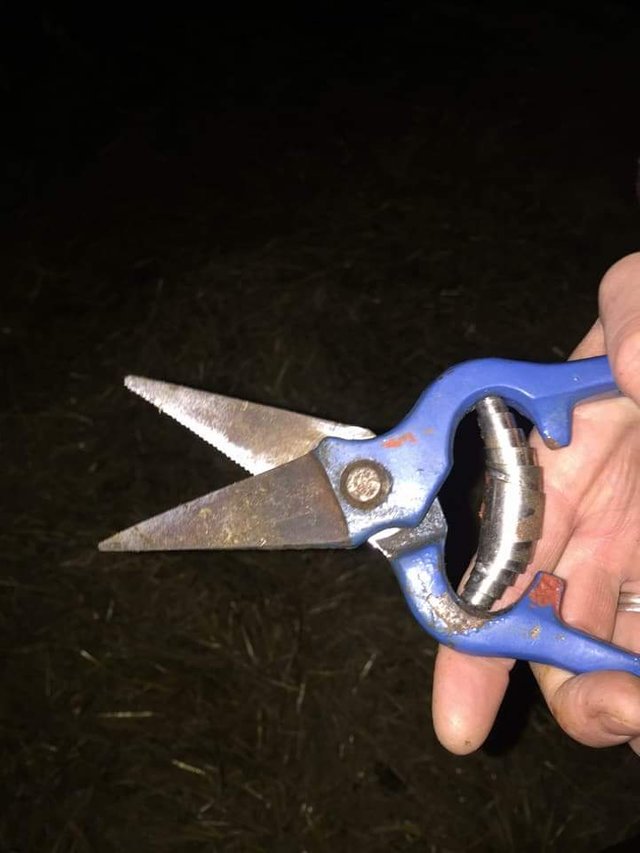
hoof shears with one smooth and one serated edge

showing you the serated edges,it's a false economy to buy or rey on pruning shears, knives or kitchen scissors for hoof works.
These are pretty ancient I think that dad has a new pair once every 10/15 years (and has just only downsized to 300 ewes) and not an expensive item so sell worth the investment in a mid-range pair
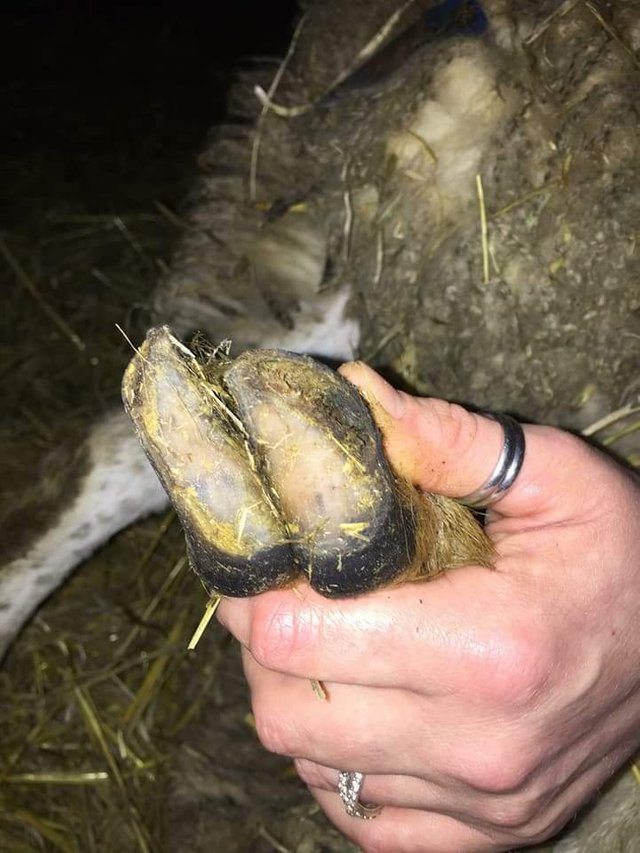
Left behind: you can see my thumb is that: here has been further separation of the hoof wall which fills up with muc & muck effectively sealing with the anerobic bacteria
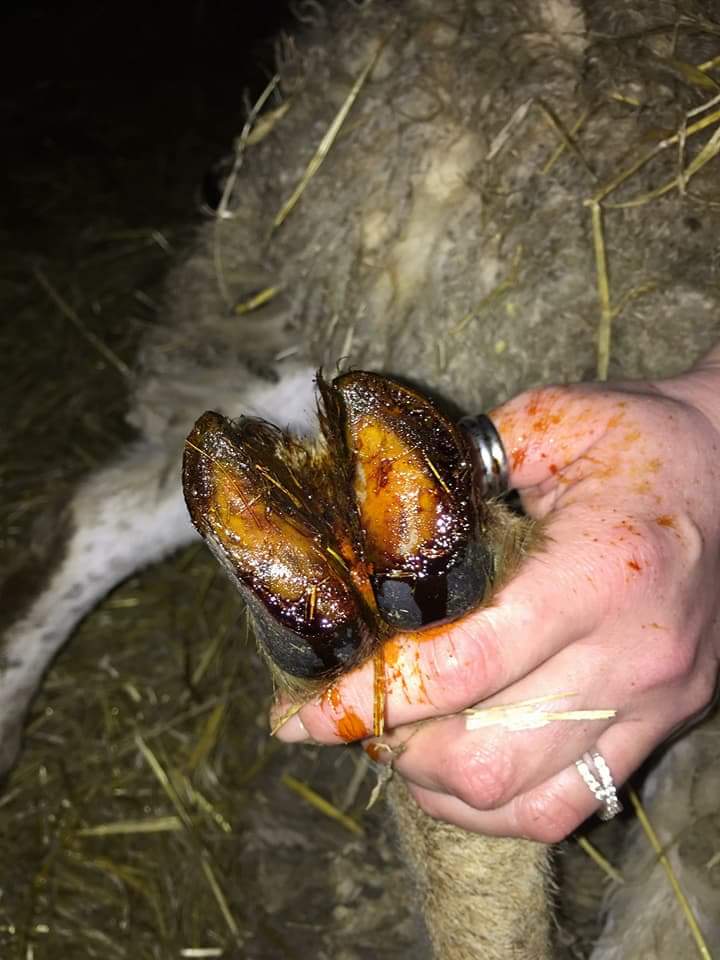
Left behind: Here I've trimmed back and taken off the outer shell of the hoof, digging cut all the crud from the white line and filling the foot full cf iodine.
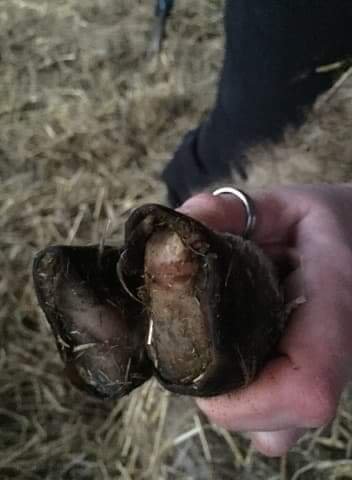
Right fore: Fantastic view of the foot that originally caused the issues for this ad.
The toe has blown out an abcess leaving severe separation and damage to the soft parts of the foot. I trimmed tack as much as I dared last week and I'm pleased to see that the hoof and pad is much harder with anice bit of growth that I can now trim backless conservatively to hopefully get rid of the whiteline disease.
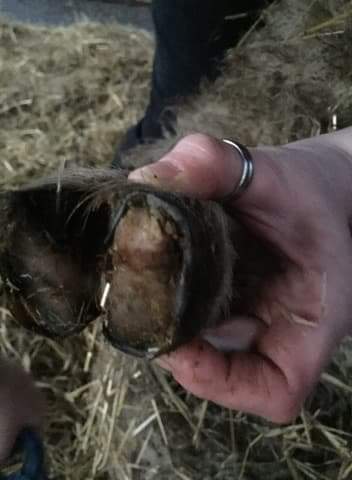
Right fore: Now I've trimmed back the excess horn,exposing the damaged larinae and scrapping out the dead tissue and muck.
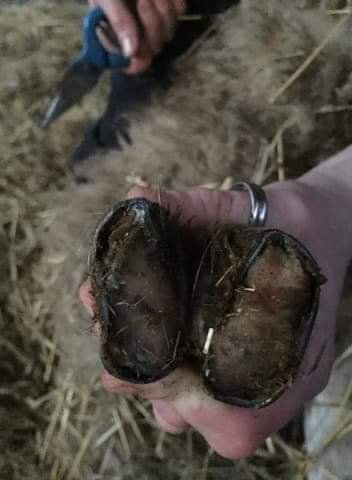
Right hind: The pressure of having not only an abcess in the right fore but also the left hind jas caused the right hind to also separate off, allowing dirt and debris (known as seedy toe) to penetrate the white line.
It's really common for lameness in one foot to spread to 2 then 3 eventually leading to a crippled sheep.
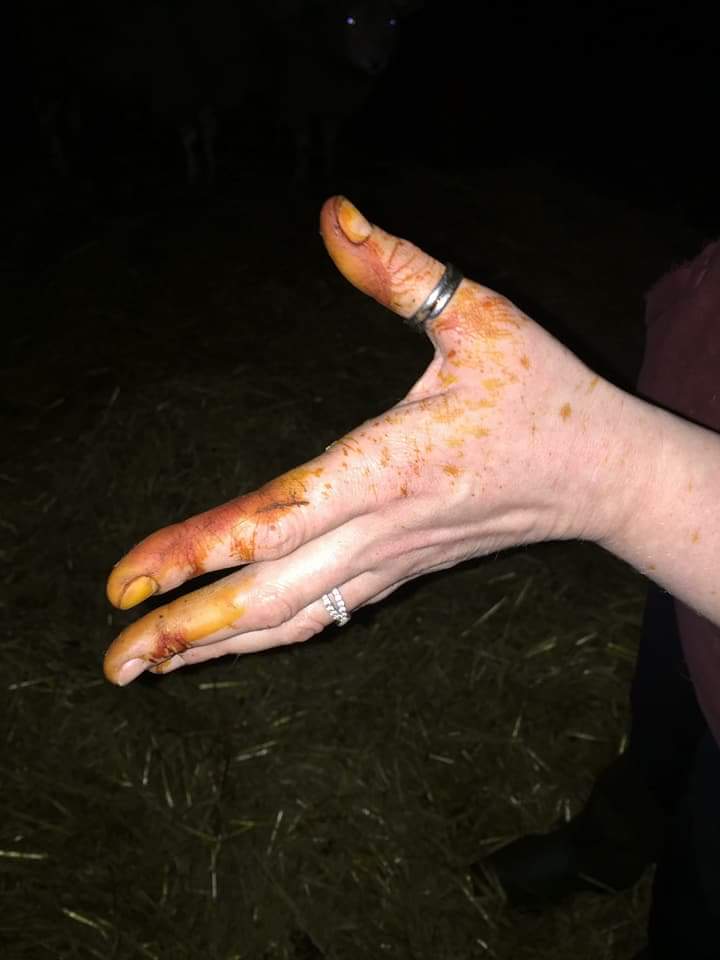
finally, of your hands (or gloves) dont look like this after you have been iodining feet then either your iodine is wateres or you arent using enough.
Hope you learn a lot. Happy hoOfing!
I came across this post while looking for articles to share in this week's homesteaders newsletter over at @homesteaderscoop. I would very much like to have shared this, but it's a bit confusing in places due to typos. I feel like it could be a fantastic article otherwise. If I might suggest proof reading before submitting (It can still be edited even now), because I think you have a lot of wisdom to share.
Posted using Partiko Android